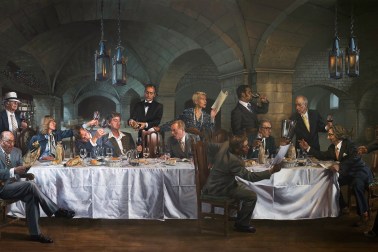Which is the finest 18th-century building in England? Not a royal palace, not a library, not a cathedral, but a stable block: that designed by James Paine at Chatsworth. It is a faultless piece of architecture with none of the messiness and compromise of buildings intended for mere human habitation. Perfect in siting, perfect in proportion, perfect in its golden stone execution, it is a masterpiece. Horace Walpole thought the masonry of Chatsworth had the ‘neatness of wrought plate’, but that of Paine’s stables has a poetic, Centaurish magnificence, rippling with five different types of rustication (channelled, striated in two directions, pocked and vermiculated). The carving of the Devonshire arms over the central arch has life-size stone stag supporters with real antlers: a witty indicator of scale.
Nor are the Chatsworth stables unique. Think of William Chamber’s at Good- wood, architecture at least as good as Somerset House; or Carr’s gigantic quadrangle at Wentworth Woodhouse, paid for by the winnings of Whistlejacket, most beautiful of racehorses immortalised by Stubbs (National Gallery); or grandest of the lot, Flitcroft’s unsurpassed pair of quadrangles at Woburn which, when Henry Holland’s riding school was still intact (it should be rebuilt), double-trumped the house itself in both scale and architectural quality.

Get Britain's best politics newsletters
Register to get The Spectator's insight and opinion straight to your inbox. You can then read two free articles each week.
Already a subscriber? Log in






Comments
Join the debate for just £1 a month
Be part of the conversation with other Spectator readers by getting your first three months for £3.
UNLOCK ACCESS Just £1 a monthAlready a subscriber? Log in